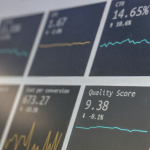For creative agencies, productivity is often difficult to measure. Here are key ways to evaluate the average effort and cost that goes into producing creative assets.
Have you ever thought that it is possible to measure productivity for creatives? This is a crucial thing that needs to be analyzed in detail since it impacts the general growth of any organization. According to the report generated back in 2016, it is vital to measure productivity efficiently to enhance efficiency. Most companies that intend to succeed in business tend to spend lots of money tracking and monitoring operations in their offices.
This is absolutely wrong since other crucial activities need to be analyzed in detail. The exciting aspect is that you can measure productivity for creatives to get a clear picture of what is happening within your business setting. Most firms rarely channel their efforts into measuring productivity for creatives and neglect the importance of training specialists to get the work done.
It is high time that business operators should come out boldly and stop delegating the productivity measurement to only the productivity specialists since this is a broad area that needs a keen eye for detail. Besides, you need to understand that managers don’t have to become experts to ascertain that the currently existing systems serve their needs.
Since measuring productivity for creatives is a broad topic for discussion, this article discusses a series of practical methodologies that you can use to get the job done and answer tons of questions available. Let’s dive in!
Use a Multifactor Perspective
Even though a single-factor productivity measure works well, it increases the productivity of one factor and replaces the other. In this scenario, labor, materials, and capital are regarded as potential substitutes for each other. To measure productivity effectively, you need to have an index that detects the impact of each factor of production and later tracks the results by combining them together.
A multifactor point of view is a vital element when determining the level of productivity within a job setting. However, the only problem is that it is challenging to encompass input forms within the work environment. To leverage this situation, you need to use different single-factor elements to be in a position to generate a multi-factor perspective.
Even if a company utilizes a single aggregate measure, it sounds impressive to use a single factor since they aid in identifying the sources of the aggregate trends. Note that using a multifactor perspective always raises other questions that impact the general process of measuring productivity for creatives. You need to analyze some of these changes considering things such as simultaneous shifts.
While analyzing some of these factors, you need to consider vital elements such as capital, labour, and material. Also, monitor any form of dimensions that have changed and any of the reasons resulting in the change.
Measure the Unmeasurable
Developing a productivity index is regarded as a challenge on its own, especially for any company that intends to emerge successfully. The index plays a critical role in identifying the roles of direct factors in a way that managers and all team members can grasp for the company’s well-being.
However, the challenge goes the extra mile. The conventional system goes the extra mile to overlook a couple of aspects within the production line. These are the time it takes for the production process to complete and every employee’s role apart from the shop floor workers.
Despite this being a crucial part of the production process, the Productivity technicians tend to look at it the other way round. At this point, the immediate oversight is not purchased but ignored entirely. On the flip side, the production process tends to consume a lot of time. Note that the fact that time is not purchased doesn’t mean that it is free; time is precious!
For instance, when a particular business is using the same machine, the same number of people who are producing the same product, then the productive index will generate the same score. On the other hand, when one company takes three days to ship products while the other takes one week, then there is a vast difference. This means that the productivity score won’t be the same.
The reality is that most companies are learning the importance of shortening their production cycle to enhance efficiency. To be on a better end, the productivity index needs to assign some amount of value to the amount of time consumed to complete the production process. Sometimes, it is unrealistic to expect a company manager to shorten the turnaround time for the production process.
You need to create an inventory that incorporates all the costs. However, the challenge with most companies is that they tend to record varying costs that differ from the original competitive costs of their operations. Apart from the realistic carrying costs, they should also reflect the exact point where the inventory sits and the amount of time it takes.
The other crucial element is understanding the specific aspect that is being measured. In most cases, companies tend to focus on the inputs, such as the shop floor, among other factors. Detecting manufacturing efficiency does not only deal with the who and what is located at the place. Other individuals such as engineers, supervisors, and other white-collar employees significantly impact the results generated at the end of the process.
Also, measure the data you received and make decisions based on that data, that can work for your company in a better way. You can also get feedback from your workers and analyze it using any data analysis or data visualization tool by creating insightful charts or visuals to understand the work process in a better way.
Most companies experience challenges since they don’t consider the performance of other aspects, thus affecting the results. When certain aspects miss out on the process, it becomes difficult to quantify productivity within any business setting. You need to focus on measuring the output and connecting it with the employees’ actions within the work environment.
Think Beyond Direct Labour
The term productivity sounds like an easy aspect to interpret. However, the sad reality is that many people running and managing businesses cannot interpret this word in simple terms. Note that productivity is not all about wages. Contrary, high wages are likely to result in a problem since workers produce too little and yet are paid lots of money.
You need to implement data visualization to help you interpret the productivity data to ensure workers are paid depending on the work done. When measuring productivity, the managing team should not focus on the dollar per hour but capitalize on labour dollars per product. Remember that highly productive workers can be paid higher compared to others, and the business will still succeed.
The measurement of productivity should focus on the general capabilities of the business and not on a single set of costs as many people do. The productivity index refers to how good your business is at using raw materials to generate better products that can be used by its target market. It mainly focuses on creating a relationship between the physical and final outputs.
Any company that produces more output compared to the given materials is on a better end of the business since it properly utilizes the raw materials. You need to focus on lowering the input costs and creating breathing room to generate better results. The ultimate goal of the productivity index is to illuminate ways on how a business can get multiple units of output depending on the labour.
Compare Apples and Apples
Every productivity design you choose only works well if you execute every aspect perfectly. In most cases, the productivity indexes are mainly used to compare the performance of different companies across the industry. The results generated tend to impact the choices made by the investor. Also, the business management team used the results to make future development decisions.
However, it reaches a point where the effective measure takes a different shape of being used in comparing different elements that do not relate. This will automatically give you ambiguous results, especially if you opt to utilize the results in your business operations. You need to be extremely keen with the kind of comparisons you make since a slight mistake can cost you heavily.
When comparing companies that specialize in different fields, requires you to have a unique methodology to find reliable results. While making the comparison, you need to consider different parameters, including the cost, price, and technical elements. Every parameter carries its weight that significantly impacts the final findings that you cannot ignore.
If a company wants to make a name for itself as a low-cost producer, it has to focus on price. If you want to capitalize on promoting innovation, it should concentrate on the technical parameter. Creating a company with standard costs mainly depends on the internal improvements of its operations.
To be on the safe end, the company managers need to be capable of identifying trends within the industry to position the brand on the right lane for success. Identifying trends makes it easier to measure and interpret the productivity of creatives to identify the milestones your business has made compared to others.
Bottom Line
Detecting productivity for creatives relies on multiple factors. You can opt to acquire tools that will enhance efficiency and help you get the job done. This has been proven effective by approximately 47% of companies that have implemented project management software in their daily operations.
















